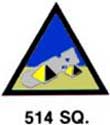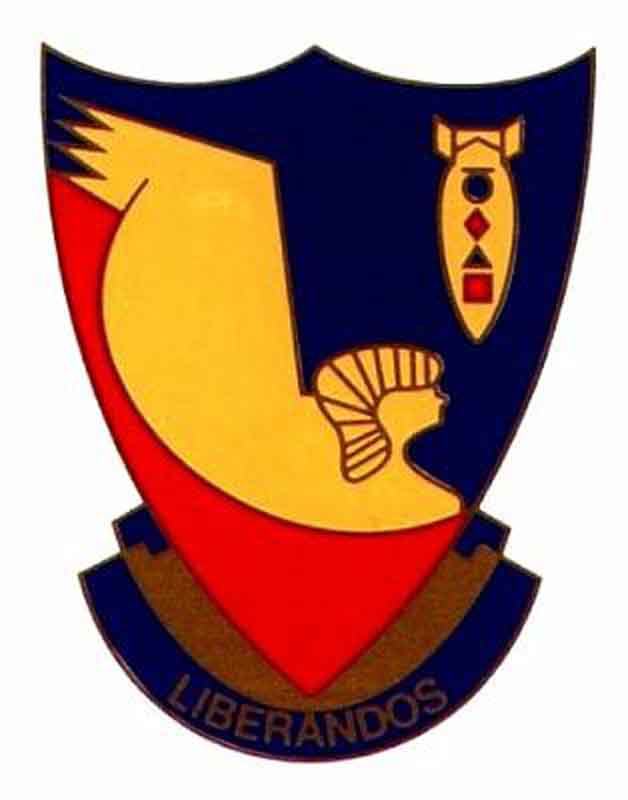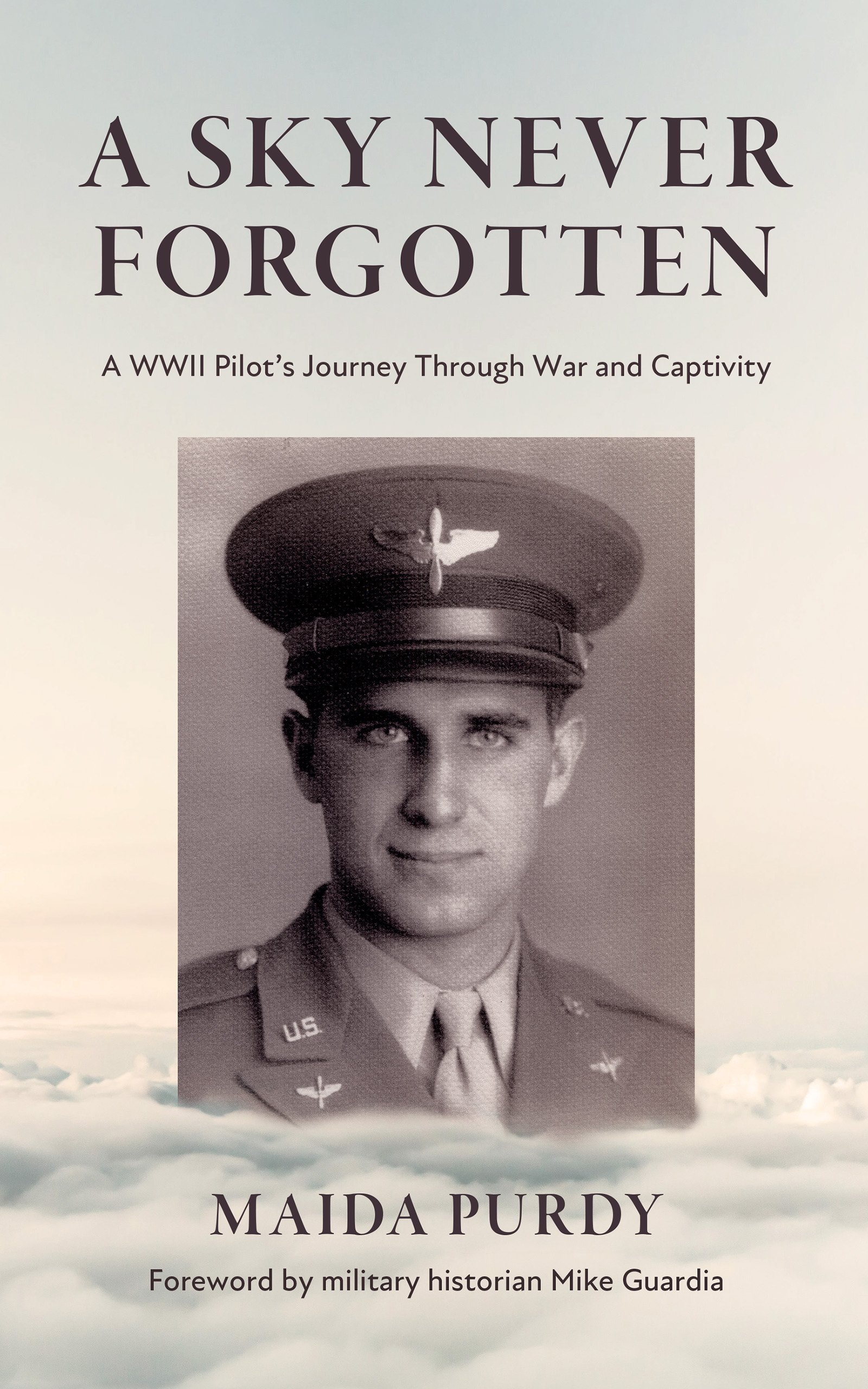Ray W. Debolt
Ray W. Debolt was in the radar group of the 514 squadron.
Ray wrote a story about his training and crew.
RAY DeBOLT'S "MICKEY SHIP" ARTICLE. FROM Norm Appold to Jim Walker
THE PLIGHT AND STORY OF A B24J RADAR CREW DURING WORLD WAR II
The story begins in September 1943 when I reported to the 357th Bomb Sqdn (302nd B.G.) at Clovis, New Mexico. I had attended radio operator’s school at both the Stevens Hotel in downtown Chicago, IL and finished up radio school at Scott Field IL. The U.S. Army Air Force closed down the Stevens Hotel in mid-class and I shipped to Scott Field for completion in June, 1943.
Upon reporting to Clovis, NM, I was assigned to a B-24 Heavy Bombardment crew. I was the tenth man to be assigned to the crew. We immediately commenced first phase bombardment training. There were 20 crews of us in our squadron undergoing first phase training. At the end of October 1943, we had completed our training and all 20 crews of us were shipped via Santa Fe R.R. to Blythe, CA for 2nd and 3rd phases of B24 heavy bombardment training. Our 20 crews were assigned to the 7th Bomb Sqdn, 34th Bomb Group at Blythe, CA. I had been assigned to the 34th Bomb Group once before in the Fall of 1942 at Ephrata, Washington. When the 34th was a B-17 A/C bomb group but the mission changed for the 34th B.G. from a B-17 A/C B.G. to a B-24 A/C B.G. So most of us then were surplus and were shipped to other bomb groups.
Last of our 2nd and 3rd phase bombardment training consisted in desert type warfare by dropping flour sack bombs on U.S. Army tanks, trucks and personnel carriers used by the ground troops. This was low-level type bombing at about 500 feet altitude. It gave gunners low-level simulated firing practice. The whole crew got plenty of practice and experience in the low level bombing activity.
All twenty crews of us successfully completed 3rd phase bombardment training by early December 1943. We all assumed we would ship overseas as a 20 crew group but they shipped ten of the crews to Salina, Kansas for overseas staging and the other ten crews of us were selected for photographic reconnaissance and high altitude combat mapping at Will Rogers Field, OK. I was selected as the man on the crew to be the crew's aerial photographer and attended the school at Will Rogers.
We were assigned the F-7 A/c. It was the photographic version of the B-24 type A/C but instead of having bomb bays and bomb racks that area was made into two large photographic laboratories. In the bombardiers area there were three large aerial mapping cameras. Two were mounted obliquely and one mounted straight down. The three cameras were called the trimetragons. These were for photographic mapping.
The ten crews finishing the photo-recon crew training by the end of January 1944 and shipped to Topeka, Kansas for staging in our newly assigned F-7 A/c. But the U.S. Army Air Force surprised five of our crews by taking away our F-7 A/C, our crew was one of the five and shipped us via rail to Langley Field, Virginia for radar bombardment training.
Our pilot, a little fellow - 2nd Lt. James Paul, said this was too much! First he was a flying truck driver flying around a plane load of bombs for a bombardier to drop. Then he became a flying truck driver for an aerial photographer and a plane load of cameras, film and a big photo lab to take a bunch of pictures of places allover the world and then thirdly, he became a glorified flying truck driver for his navigator to squint through his radarscope so he could drop a plane load of bombs on some hidden and obscure target.
The five crews of us arrived at the Shellbank area, a remote spot at Langley Field, Virginia on the 2nd of Feb. 1944 and reported to the 3rd Search Attack Sqdn. The Shellbank area of Langley Field was where all the radar crews were housed, fed and trained. We were given a thorough briefing of our forthcoming training with emphasis that radar bombing was highly secret and therefore our training would be highly secret. We were told if anyone asked us what we were doing while stationed at Langley - just to answer on German submarine patrol. That’s all. - And to tell that to our folks, wives or girl friends. Also never to use the term radar and if we had to say the word to use the word "mickey" in its place. And we were told if any of us broke those rules that we could expect a court marshal!
Most all of our radar flight training were flown at night. Our navigator, a Lt. Bruce, was selected to man the radarscope and our flights and training oriented around his directions. We radar bombed, at night, such east coast cities of Portland, ME Boston, New York, Philadelphia, Baltimore and other eastern seaboard cities.
Due to the fact that radar was so new that when it was time to ship overseas, that four of us out of the ten man crew had to go by naval ship. That way four men from each of the five crews or five Lieutenants, bombardiers and fifteen Sergeants, all shipped overseas on the 1st of March, 1944 via ship across the Atlantic to Casablanca, French Morocco - then via C-47 A/C to Oran, Algiers, Tunis, Biserte, Sicily and finally all 20 of us to the 47th Bomb Wing of the 15th Air Force. That trip from Langley to Italy took 25 days.
We went overseas six weeks ahead of the rest of the crew. The four of us from each of the five crews were taken off of our crew's flight overseas to lighten the load for the flight as two ground radar technicians, with their gear, plus two extra radar sets and many spare parts would be taking our places on the flight overseas.
Our five radar crews being trained at Langley were all slated for future assignment to the 47th Bomb Wing of the 15th Air Force. So important to get those new radar equipped B-24's and the crews to the 15th Air Force that the 15th Air Force cut "secret" orders for Major Dan Orr of the 376th Bomb Group, who had completed 48 missions, to return to the states via MATS aircraft and to report to Langley to personally escort the five radar crews and their five radar equipped B-24's via the South Atlantic route to Italy and the 15th Air Force.
Major Dan Orr's orders were marked "SECRET", but somehow upon his arrival at the MATS Miami, Florida base, somehow Major Orr's "SECRET" orders were disregarded and someone cut "new" orders on him and shipped him to Smyrna, Tenn., as a B-24 instructor pilot. He went to Tennessee under protest, he said, but after a week or so in Tennessee the 15th Air Force "found him" and got his orders straightened out and on to Langley Field to escort the five radar crews and their radar equipped B-24's to Italy and to the 47th Bomb Wing of the 15th Air Force.
The five crews got underway for their overseas flight from Langley, Field, VA for Italy early in April, 1944 via the southern route across the Atlantic Ocean via Miami, FL, Puerto Rico, Belem, Brazil and to Natal, Brazil for the flight across the Atlantic Ocean to Dakar. According to Major Orr all went well from Langley to Natal and no trouble was had by any of the aircraft. All five of the crews and B-24's took off from Natal, Brazil at just about the same time for the eastward flight across the Atlantic Ocean for Dakar, West Africa. But only three crews and their aircraft landed at Dakar. Two of the radar crews went down in the Atlantic Ocean without any warning or "Mayday" radio distress calls. They simply disappeared on the flight across the Atlantic Ocean. The three crews under Major Orr's escort arrived safely in Italy and my crew was assigned to the 514th Bomb Sqdn, 376th Bomb Group in mid-April, 1944. Whereas the four of us that had shipped by boat across the Atlantic and flew from Casablanca, French Morocco to Italy via C-47 A/C had arrived at the end of March, 1944.
I had grown tired of doing nothing after about 2-3 days after arriving in Italy with the 514th Bomb Sqdn, awaiting for my crew to fly in from the States so I went to the Sqdn C.O. and asked to be put on flying status and to start flying my 50 missions with the 376th B.G. as a spare aerial photographer or radio operator or Armorer-gunner. By the time the crew arrived from the States I had flown several combat missions to my credit. One being Vienna Austria and one to Ploesti, Romania. I really felt like an "old combat veteran" when my crew asked me how those missions were!
Our first mission together, that is, all ten of us as a radar crew, who had started out as a crew back in Clovis, NM in September, 1943, was on 24 April 1944. Our first mission was to Ploesti, Romania, in our new B-24J radar ship. We were slated on this mission to lead the 15th Air Force, right up there in the number two slot off the left wing tip of the lead ship. We were to fly lead for the 47th Bomb Wing and other bomb wings flying with us on this particular mission.
Coming across the flat plains of Romania, we could see that the Romanian oil fields of Ploesti was socked in a great smoke pall from many hundreds of smoke pots the Germans had ignited to obscure the oil fields of Ploesti. An ideal target area for radar bombing - the day and sky was clear but the target totally obscured from a dense cloud of smoke. The navigator had the target in his scope and reported to the lead ship over the "command" setting on the radio for "x" amount of seconds to bomb drop, but the order not to drop went out over the command radio channel. Most of the other bomb groups from other wings dropped their bombs on this first pass. We, the 47th Bomb wing, did a 180 turn for a second bomb run on Ploesti and again our navigator,
Lt. Bruce had the target in his radar scope and called over the command radio for "x" amount of seconds until bomb drop. But again the order not to drop was relayed. The other bomb groups in the 47th Bomb Wing dropped their bombs except for the 376th B.G. Another 180-degree turn was made and back over Ploesti for the 3rd time and on this bomb run the 376th dropped their bombs.
At debriefing, after the mission, we explained what happened and I just presume that the powers-to-be didn't like what happened or like having a new inexperienced crew leading the 15th Air Force. The outcome was they took away our new B-24J radar ship and along with it went Lt. Bruce, our navigator. From then on we were to fly as a nine-man crew, without a navigator. We didn't get to fly the lead position for quite a while and had to work up from tail end Charlie to lead ship some 30 to 40 missions later. And all nine of us came through safely with only one Purple Heart medal awarded to our tail turret gunner for a wound in his ankle. Even our co-pilot a Lt. Vernon Townes, a big Texan, made first pilot, got his own crew. He, too, and his crew, made it through safely.
But such was the plight and story of a well-trained heavy bombardment, photographic reconnaissance - combat mapping, radar-trained crew.


The website 376bg.org is NOT our site nor is it our endowment fund.
At the 2017 reunion, the board approved the donation of our archives to the Briscoe Center for American History, located on the University of Texas - Austin campus.
Also, the board approved a $5,000 donation to add to Ed Clendenin's $20,000 donation in the memory of his father. Together, these funds begin an endowment for the preservation of the 376 archives.
Donate directly to the 376 Endowment
To read about other endowment donation options, click here.
Reunion
NOTE change in the schedule !!
DATES: Sep 25-28, 2025
CITY:Rapid City, SD
HOTEL: Best Western Ramkota Conference Hotel; 2111 North LaCrosse St., Rapid City, SD 57702; 605-343-8500
Click here to read about the reunion details.




















